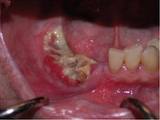What is leukemia?
Leukemia is a malignant cancer of the blood in which one’s bone marrow produces white blood cells in excess in association with gene mutations.
Causes of leukemia
Genetic predisposition (family history, people with Down syndrome have higher tendency to get leukemia)
Artificial ionizing radiation
Chemicals (eg benzene and other petrochemicals)
Viruses, e.g. HIV (Human Immunodeficiency virus or HTLV-1 (human T-lymphotropic virus)
Types of leukemia
Leukemia is classified by clinical course (acute or chronic) and by type of cell of origin (lymphoblast or non-lymphoblast/myeloblastic):
i) Acute Lymphoblastic leukemia (ALL)
ii) Acute Myeloblastic leukemia (AML)
iii) Chronic Lymphoblastic leukemia (CLL)
iv) Chronic Myeloblastic leukemia (CML)
Signs & Symptoms of leukemia
i) Symptoms of anemia due to lack of red blood cells (for example, fatigue, pale skin, weight loss etc)
ii) Susceptibility to infections (fungal or viral infections)
iii) Bleeding tendency (bleeds easily and increased blood clotting time)
iv) Lymphadenopathy
Role of dentists leading to diagnosis of leukemia
Sometimes the dentist can play an important as being the first to identify the symptoms of leukemia leading to the diagnosis of such a condition in a person. This is because leukemia may present in the mouth as abnormalities of gum tissues such as:
-the gums may be pale, bulbous and lack stippling
-mucosal bleeding
-ulcerations
-palatal petechiae
-gingival hyperplasia
– Mucositis
If a dentist suspects leukemiain a particular patient, he should send the patient for blood test as baseline investigation.
Treatment of leukemia
Depends on :
-Type of leukemia (see classification of leukemia above)
-Age of patient
-State of health of patient
Usually treatment is through chemotherapy. Some patients, particularly patients in remission, will require a combination of chemotherapy and stem cell transplant, which will be briefly discussed below.
Leukemia and oral health
i) Bleeding tendencies-complicate dental management
ii) susceptibility to infection/septicaemia
iii) Treatment of leukemia is via chemotherapy and in some cases bone marrow transplant:
Cytotoxic drugs used in chemotherapy can cause:
-nausea & vomiting in some patients
-acidity of vomitus is harmful to teeth, as they can slowly erode tooth surfaces away (dental erosion)
Principles of oral healthcare in patients with leukemia
i) Before Chemotherapy
-assessment & Treatment planning:patient needs to be assessed and a comprehensive treatment planning planned
– patients should go for dental clearance: extractions of teeth with poor diagnosis, restoration of teeth which are salvageable, oral health instructions reinforced, alteration of diet, application of fluoride, usage of chlorhexidine mouthewashes
ii) During induction of chemotherapy
-continue preventive oral healthcare-keep their dental appointments
-use of antifungals (nystatin cream) & antiviral(acyclovir) if there are any signs of viral or fungal infections
iii) After chemotherapy
-continue preventive oral healthcare
-regular checkups
Although oral healthcare should be reinforced in all patients, but it is all the more important in these patients:
-Diligently brush and floss
-use soft-tufted toothbrush to avoid trauma to the gums
-chlorhexidine mouthwash twice daily
-Temporarily stop tooth-brushing if oral lesions are too painful
-Use artificial saliva and 5% sodium bicarbonate rinse in patients with dry mouth (xerostomia)
Consideration for patients going for Bone Marrow Transplant (& radiotherapy/TBI)
Patients who require bone marrow transplant will usually need conditioning treatment prior to it. Conditioning therapy basically means treatment to prepare the patient’s body to receive the new bone marrow that will be transplanted into his or her body. If the body rejects the transplanted bone marrow, a condition called Graft-versus-host-disease (GVHD) occurs, which can be fatal. Conditioning treatment consists of chemotherapy and sometimes radiotherapy of the whole body (total body irradiation, or TBI)
Radiotherapy:
- gets rid of the existing defective bone marrow to allow space for the transplanted marrow
- kills any malignant cells (leukaemic cells) that remains even after chemotherapy, especially at parts of the body where chemotherapy does not reach well (eg. brain, testes)
- suppresses the body’s immune system so that the body does not attack and reject transplanted marrow, i.e. to prevent GVHD.
Patients who have gone through radiotherapy on the head and neck region will have:
i) reduced blood supply to the jaw bones
ii) reduced salivary excretion leading to dry mouth
iii) susceptibility to oral infections such as candidal infection due to the dry oral condition and change in the balance of the microorganisms in the mouth.
iv) sore mouth
v) limitation of mouth opening, or trismus
vi) difficulty in swallowing
vii) risk of osteoradionecrosis- more information is available regarding this in the articlehttps://www.intelligentdental.com/2012/05/05/osteonecrosis-of-the-jaw-part-1/
Conclusion
It is evident that dentists play an important in the multidisciplinary management of leukemia patients. Therefore the dental and medical doctors should work together to come up with the ideal and comprehensive treatment plan for all leukemia patients.

